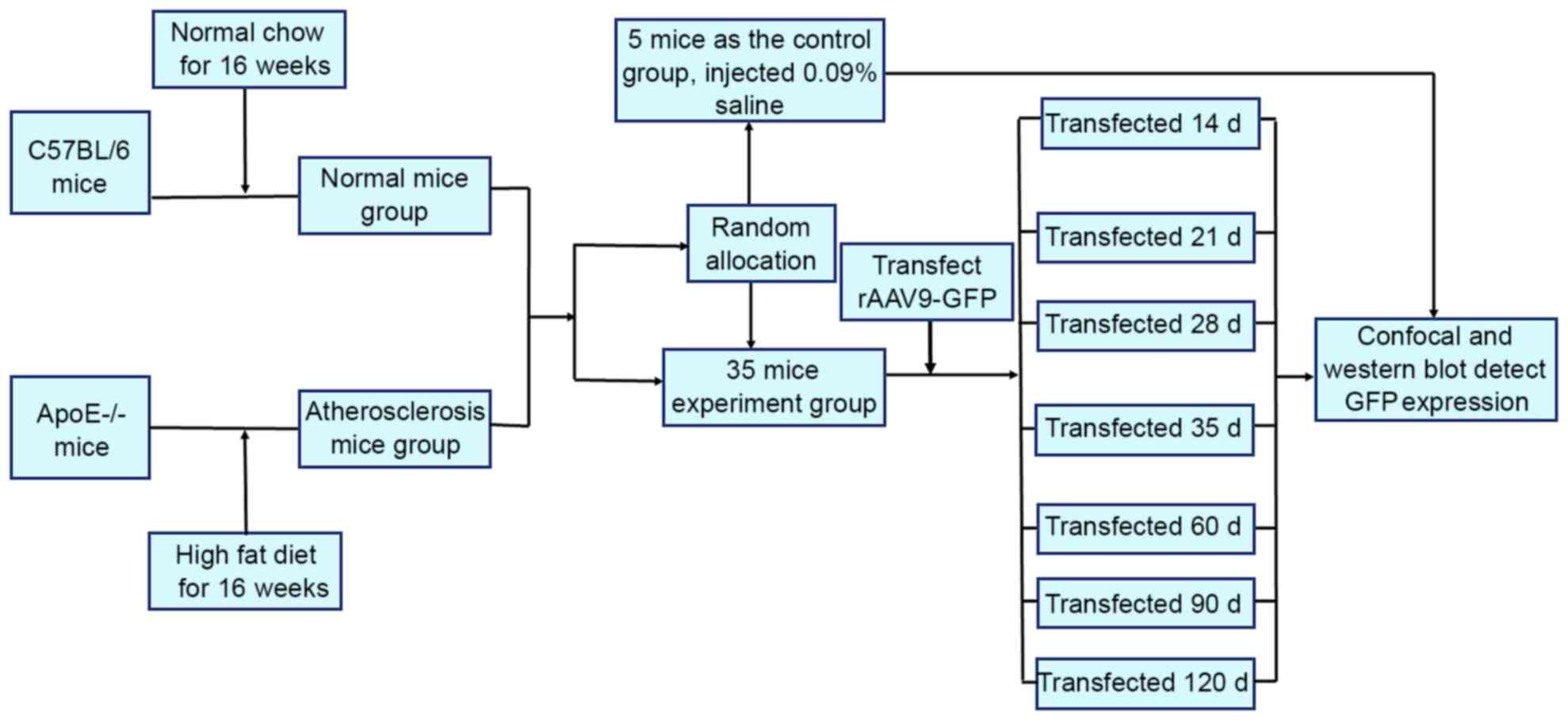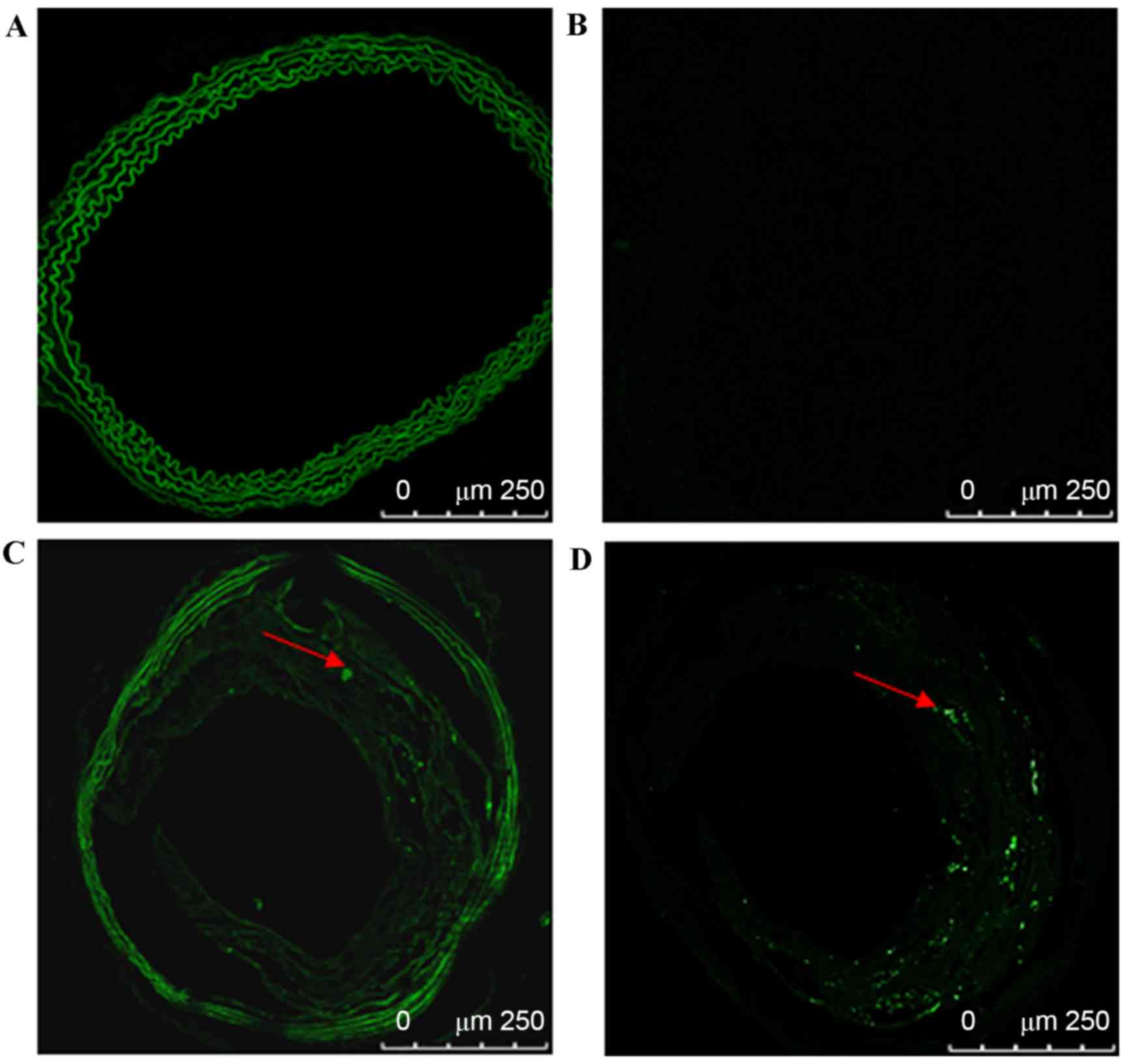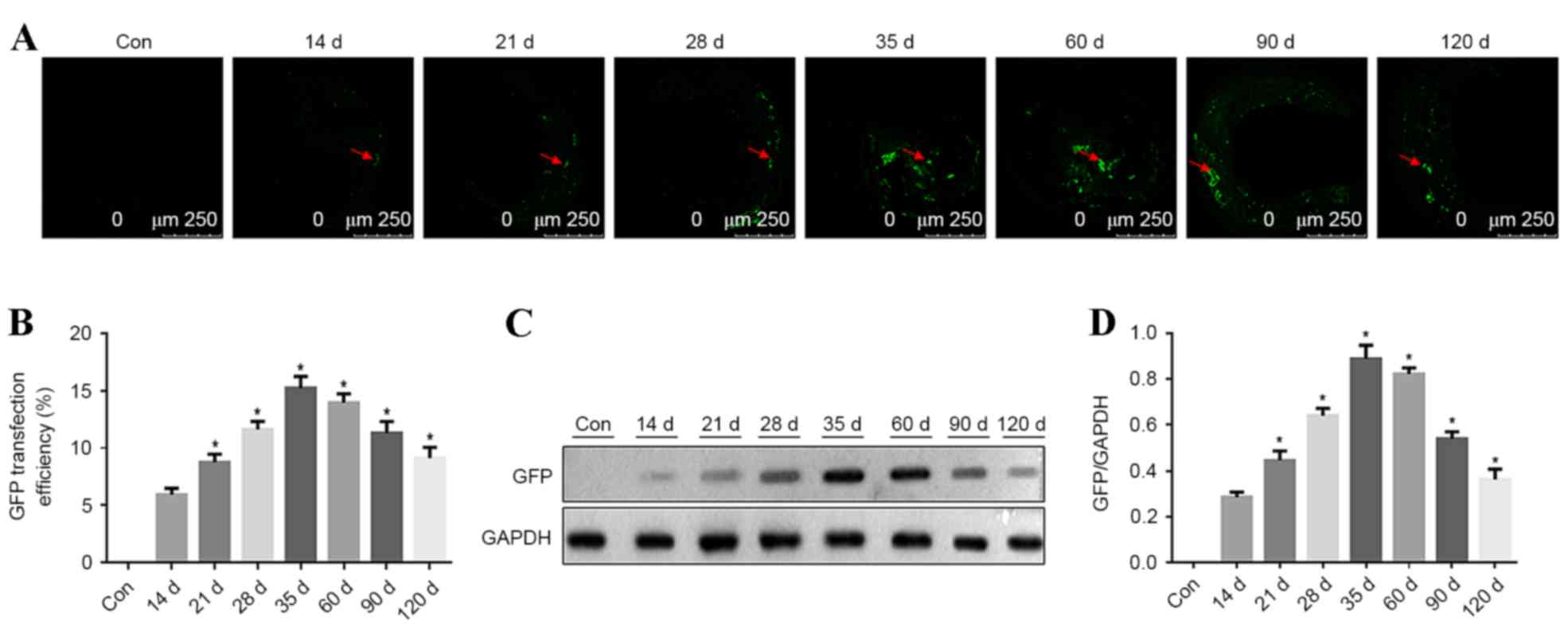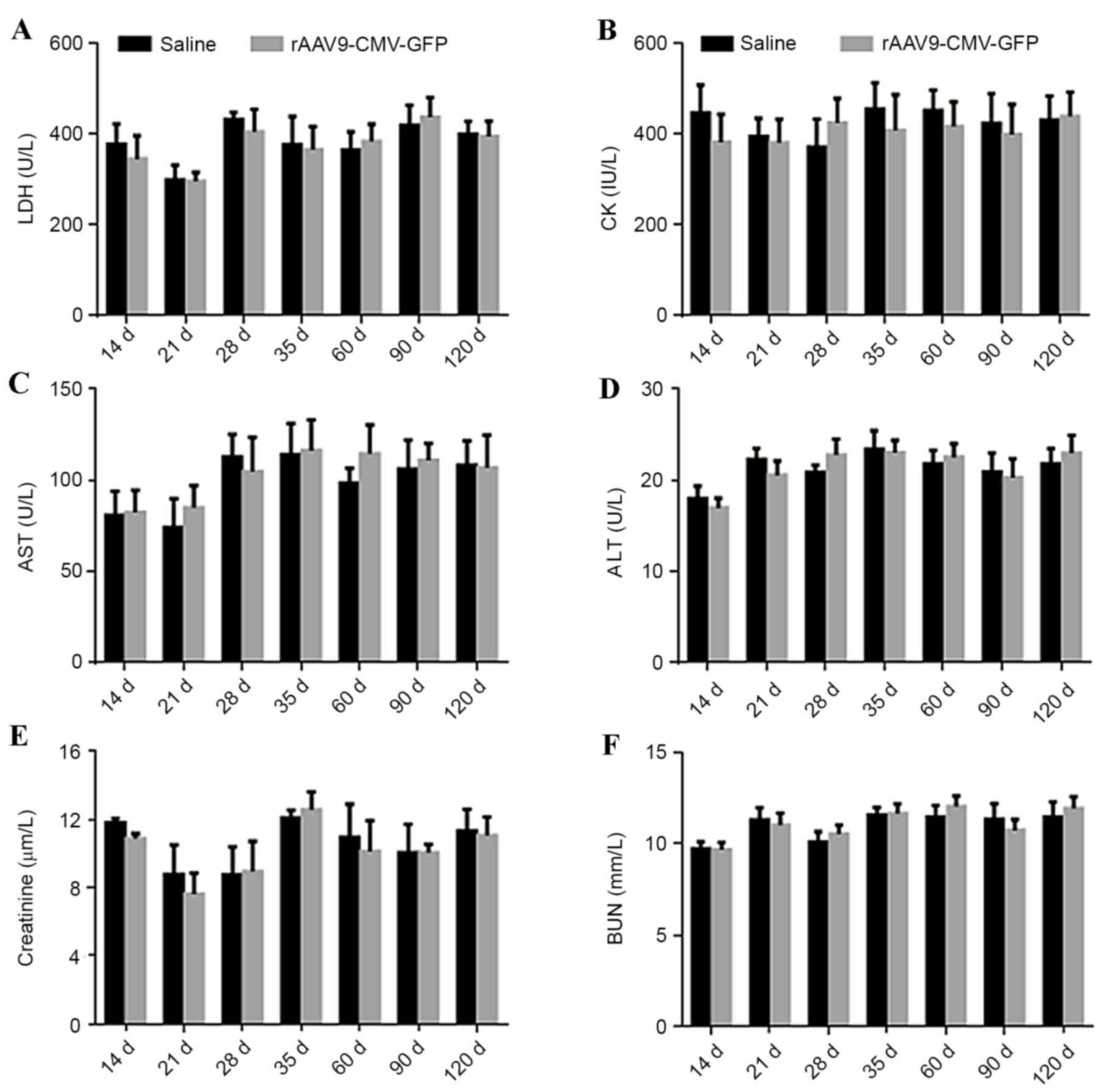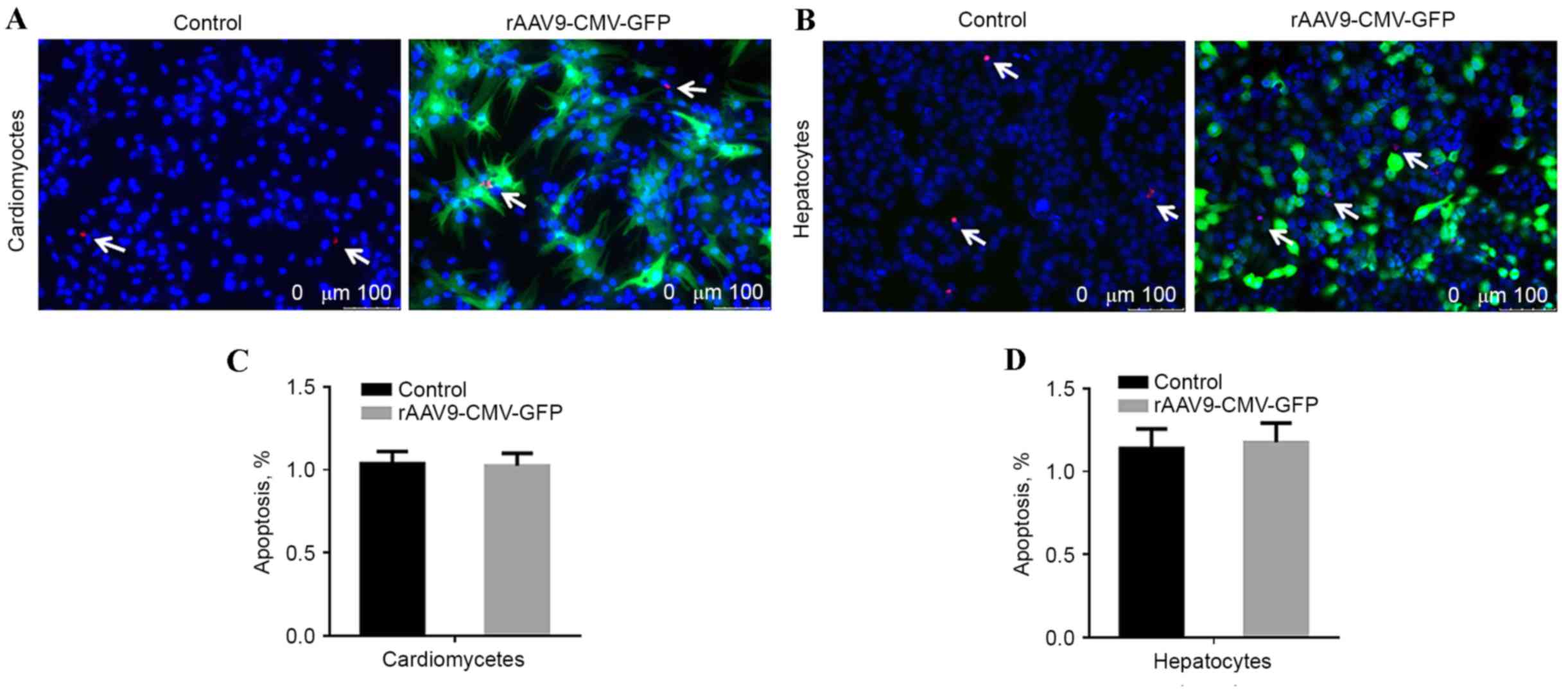|
1
|
Lewis SJ: Prevention and treatment of
atherosclerosis: A practitioner's guide for 2008. Am J Med. 122(1
Suppl): S38–S50. 2009. View Article : Google Scholar : PubMed/NCBI
|
|
2
|
De Nooijer R, Verkleij CJ, von der Thüsen
JH, Jukema JW, van der Wall EE, van Berkel TJ, Baker AH and Biessen
EA: Lesional overexpression of matrix metalloproteinase-9 promotes
intraplaque hemorrhage in advanced lesions but not at earlier
stages of atherogenesis. Arterioscler Thromb Vasc Biol. 26:340–346.
2006. View Article : Google Scholar : PubMed/NCBI
|
|
3
|
Zadelaar AS, von der Thüsen JH, Boesten
LS, Hoeben RC, Kockx MM, Versnel MA, van Berkel TJ, Havekes LM,
Biessen EA and van Vlijmen BJ: Increased vulnerability of
pre-existing atherosclerosis in ApoE-deficient mice following
adenovirus-mediated Fas ligand gene transfer. Atherosclerosis.
183:244–250. 2005. View Article : Google Scholar : PubMed/NCBI
|
|
4
|
Von Der Thüsen JH, Kuiper J, Fekkes ML, De
Vos P, Van Berkel TJ and Biessen EA: Attenuation of atherogenesis
by systemic and local adenovirus-mediated gene transfer of
interleukin-10 in LDLr-/− mice. FASEB J. 15:2730–2732.
2001.PubMed/NCBI
|
|
5
|
White K, Büning H, Kritz A, Janicki H,
McVey J, Perabo L, Murphy G, Odenthal M, Work LM, Hallek M, et al:
Engineering adeno-associated virus 2 vectors for targeted gene
delivery to atherosclerotic lesions. Gene Ther. 15:443–451. 2008.
View Article : Google Scholar : PubMed/NCBI
|
|
6
|
Skubis-Zegadło J, Stachurska A and Małecki
M: Vectrology of adeno-associated viruses (AAV). Med Wieku Rozwoj.
17:202–206. 2013.PubMed/NCBI
|
|
7
|
Pacak CA and Byrne BJ: AAV vectors for
cardiac gene transfer: Experimental tools and clinical
opportunities. Mol Ther. 19:1582–1590. 2011. View Article : Google Scholar : PubMed/NCBI
|
|
8
|
White SJ, Nicklin SA, Büning H, Brosnan
MJ, Leike K, Papadakis ED, Hallek M and Baker AH: Targeted gene
delivery to vascular tissue in vivo by tropism-modified
adeno-associated virus vectors. Circulation. 109:513–519. 2004.
View Article : Google Scholar : PubMed/NCBI
|
|
9
|
Work LM, Büning H, Hunt E, Nicklin SA,
Denby L, Britton N, Leike K, Odenthal M, Drebber U, Hallek M and
Baker AH: Vascular bed-targeted in vivo gene delivery using
tropism-modified adeno-associated viruses. Mol Ther. 13:683–693.
2006. View Article : Google Scholar : PubMed/NCBI
|
|
10
|
Nathwani AC, Davidoff A, Hanawa H, Zhou
JF, Vanin EF and Nienhuis AW: Factors influencing in vivo
transduction by recombinant adeno-associated viral vectors
expressing the human factor IX cDNA. Blood. 97:1258–1265. 2001.
View Article : Google Scholar : PubMed/NCBI
|
|
11
|
Koeberl DD, Alexander IE, Halbert CL,
Russell DW and Miller AD: Persistent expression of human clotting
factor IX from mouse liver after intravenous injection of
adeno-associated virus vectors. Proc Natl Acad Sci USA.
94:1426–1431. 1997. View Article : Google Scholar : PubMed/NCBI
|
|
12
|
Aikawa R, Huggins GS and Snyder RO:
Cardiomyocyte-specific gene expression following recombinant
adeno-associated viral vector transduction. J Biol Chem.
277:18979–18985. 2002. View Article : Google Scholar : PubMed/NCBI
|
|
13
|
Prasad KM, Xu Y, Yang Z, Toufektsian MC,
Berr SS and French BA: Topoisomerase inhibition accelerates gene
expression after adeno-associated virus-mediated gene transfer to
the mammalian heart. Mol Ther. 15:764–771. 2007. View Article : Google Scholar
|
|
14
|
Bostick B, Ghosh A, Yue Y, Long C and Duan
D: Systemic AAV-9 transduction in mice is influenced by animal age
but not by the route of administration. Gene Ther. 14:1605–1609.
2007. View Article : Google Scholar : PubMed/NCBI
|
|
15
|
Gregorevic P, Blankinship MJ, Allen JM,
Crawford RW, Meuse L, Miller DG, Russell DW and Chamberlain JS:
Systemic delivery of genes to striated muscles using
adeno-associated viral vectors. Nat Med. 10:828–834. 2004.
View Article : Google Scholar : PubMed/NCBI
|
|
16
|
Inagaki K, Fuess S, Storm TA, Gibson GA,
Mctiernan CF, Kay MA and Nakai H: Robust systemic transduction with
AAV9 vectors in mice: Efficient global cardiac gene transfer
superior to that of AAV8. Mol Ther. 14:45–53. 2006. View Article : Google Scholar : PubMed/NCBI
|
|
17
|
Pacak CA, Mah CS, Thattaliyath BD, Conlon
TJ, Lewis MA, Cloutier DE, Zolotukhin I, Tarantal AF and Byrne BJ:
Recombinant adeno-associated virus serotype 9 leads to preferential
cardiac transduction in vivo. Circ Res. 99:e3–e9. 2006. View Article : Google Scholar : PubMed/NCBI
|
|
18
|
Wang Z, Zhu T, Qiao C, Zhou L, Wang B,
Zhang J, Chen C, Li J and Xiao X: Adeno-associated virus serotype 8
efficiently delivers genes to muscle and heart. Nat Biotechnol.
23:321–328. 2005. View
Article : Google Scholar : PubMed/NCBI
|
|
19
|
Ghosh A, Yue Y, Long C, Bostick B and Duan
D: Efficient whole-body transduction with trans-splicing
adeno-associated viral vectors. Mol Ther. 15:750–755. 2007.
View Article : Google Scholar : PubMed/NCBI
|
|
20
|
Pacak CA, Sakai Y, Thattaliyath BD, Mah CS
and Byrne BJ: Tissue specific promoters improve specificity of AAV9
mediated transgene expression following intra-vascular gene
delivery in neonatal mice. Genet Vaccines Ther. 6:132008.
View Article : Google Scholar : PubMed/NCBI
|
|
21
|
Chen BD, He CH, Chen XC, Pan S, Liu F, Ma
X, Li XM, Gai MT, Tao J, Ma YT, et al: Targeting transgene to the
heart and liver with AAV9 by different promoters. Clin Exp
Pharmacol Physiol. 42:1108–1117. 2015. View Article : Google Scholar : PubMed/NCBI
|
|
22
|
Virag T, Cecchini S and Kotin RM:
Producing recombinant adeno-associated virus in foster cells:
Overcoming production limitations using a baculovirus-insect cell
expression strategy. Hum Gene Ther. 20:807–817. 2009. View Article : Google Scholar : PubMed/NCBI
|
|
23
|
Chen H: Intron splicing-mediated
expression of AAV Rep and Cap genes and production of AAV vectors
in insect cells. Mol Ther. 16:924–930. 2008. View Article : Google Scholar : PubMed/NCBI
|
|
24
|
Chen H: Exploiting the intron-splicing
mechanism of insect cells to produce viral vectors harboring toxic
genes for suicide gene therapy. Mol Ther Nucleic Acids. 1:e572012.
View Article : Google Scholar : PubMed/NCBI
|
|
25
|
Geisler A, Jungmann A, Kurreck J, Poller
W, Katus HA, Vetter R, Fechner H and Müller OJ:
microRNA122-regulated transgene expression increases specificity of
cardiac gene transfer upon intravenous delivery of AAV9 vectors.
Gene Ther. 18:199–209. 2011. View Article : Google Scholar : PubMed/NCBI
|
|
26
|
Livak KJ and Schmittgen TD: Analysis of
relative gene expression data using real-time quantitative PCR and
the 2(−Delta Delta C(T)) Method. Methods. 25:402–408. 2001.
View Article : Google Scholar : PubMed/NCBI
|
|
27
|
Guo W, Wong S and Bhasin S: AAV-mediated
administration of myostatin pro-peptide mutant in adult Ldlr null
mice reduces diet-induced hepatosteatosis and arteriosclerosis.
PLoS One. 8:e710172013. View Article : Google Scholar : PubMed/NCBI
|
|
28
|
Foster K, Graham IR, Otto A, Foster H,
Trollet C, Yaworsky PJ, Walsh FS, Bickham D, Curtin NA, Kawar SL,
et al: Adeno-associated virus-8-mediated intravenous transfer of
myostatin propeptide leads to systemic functional improvements of
slow but not fast muscle. Rejuvenation Res. 12:85–94. 2009.
View Article : Google Scholar : PubMed/NCBI
|
|
29
|
Baker AH, Kritz A, Work LM and Nicklin SA:
Cell-selective viral gene delivery vectors for the vasculature. Exp
Physiol. 90:27–31. 2005. View Article : Google Scholar : PubMed/NCBI
|
|
30
|
Wang Z, Ma HI, Li J, Sun L, Zhang J and
Xiao X: Rapid and highly efficient transduction by double-stranded
adeno-associated virus vectors in vitro and in vivo. Gene Ther.
10:2105–2111. 2003. View Article : Google Scholar : PubMed/NCBI
|



